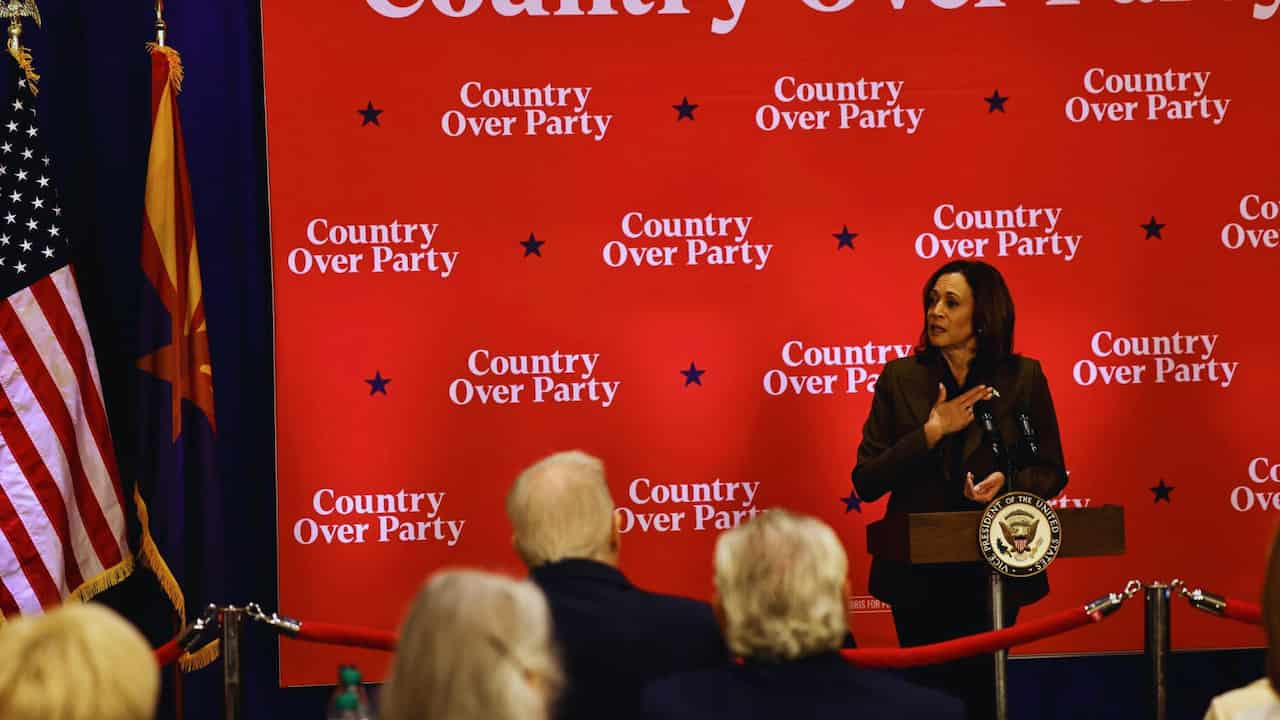VP Harris Pledges Bipartisan Approach: A Bold Move in Election Battleground
In a groundbreaking move that could reshape the political landscape, Vice President Kamala Harris has unveiled plans to create a bipartisan council of advisors if elected president on November 5.
This announcement during a campaign event in Scottsdale, Arizona, signals a potential shift towards more inclusive governance in an increasingly divided nation.
Harris, the Democratic presidential nominee, didn’t stop there. In a move that raised eyebrows across party lines, she also committed to appointing a Republican to her Cabinet.
“I don’t want any ‘Yes’ people,” Harris declared, her voice carrying across the room filled with Republican supporters. “I want people to come in and kick the tires on ideas.”
This push for diversity of thought comes at a crucial time in American politics. Harris’s strategy could be a game-changer with the country split down the middle on many issues. By reaching across the aisle, she’s not just talking about unity – she’s putting it into action.
The proposed bipartisan council isn’t just for show. Harris emphasized its practical purpose: “We can put some structure around this point. And do the important work.” This council could serve as a sounding board for policies, ensuring that different viewpoints are considered before making decisions.
Harris’s southwestern campaign swing took her through Nevada and Arizona, two key battleground states that could decide the election’s outcome. Her packed schedule included a Univision town hall in Las Vegas, where she engaged directly with Hispanic voters, a demographic that could swing the election.
In another strategic move, Harris met with the Culinary Workers Union Local 226, one of Nevada’s most powerful labor organizations. This meeting underscores the importance of worker’s rights and economic issues in her campaign platform.
The Vice President didn’t shy away from big crowds either. A campaign rally in Phoenix drew supporters eager to hear her vision for the future. Harris’s energy was palpable as she laid out her plans for a more inclusive America.
Recent polls suggest that Harris’s strategy might be paying off. A Reuters/Ipsos poll shows that she leads her Republican rival, Donald Trump, by three percentage points – 46% to 43%. While this lead is narrow, it’s significant in an election where every vote counts.
Harris’s bipartisan approach isn’t without its critics. Some argue that it could water down Democratic policies, while others see it as a necessary step to heal a divided nation. Regardless of where one stands on the issue, it’s clear that Harris is shaking up the traditional campaign playbook.
Political analysts are closely watching how this strategy unfolds. Will it energize moderate voters who feel left out by extreme partisanship? Or will it alienate die-hard Democrats who want a more progressive agenda? Only time will tell.
Harris’s campaign is ramping up its efforts as the election draws near. Her team is leveraging cutting-edge natural language processing tools to analyze voter sentiment and tailor messages to specific demographics. This tech-savvy approach and old-fashioned retail politics could give Harris an edge in tight races.
The Vice President’s promise of bipartisanship isn’t just about winning an election but effectively governing a deeply divided country. Harris hopes to find common ground on pressing issues like healthcare, climate change, and economic recovery by bringing diverse voices.
As we enter the final stretch of this high-stakes election, all eyes are on Harris and her bold strategy. Will her gamble on bipartisanship pay off at the ballot box? And more importantly, could it pave the way for a new era of cooperation in American politics?
One thing is clear: Harris is offering a fresh approach in a political landscape often marked by gridlock and partisan bickering. Whether it’s enough to win the White House remains to be seen, but it’s certainly given voters something to think about as they head to the polls on November 5.
